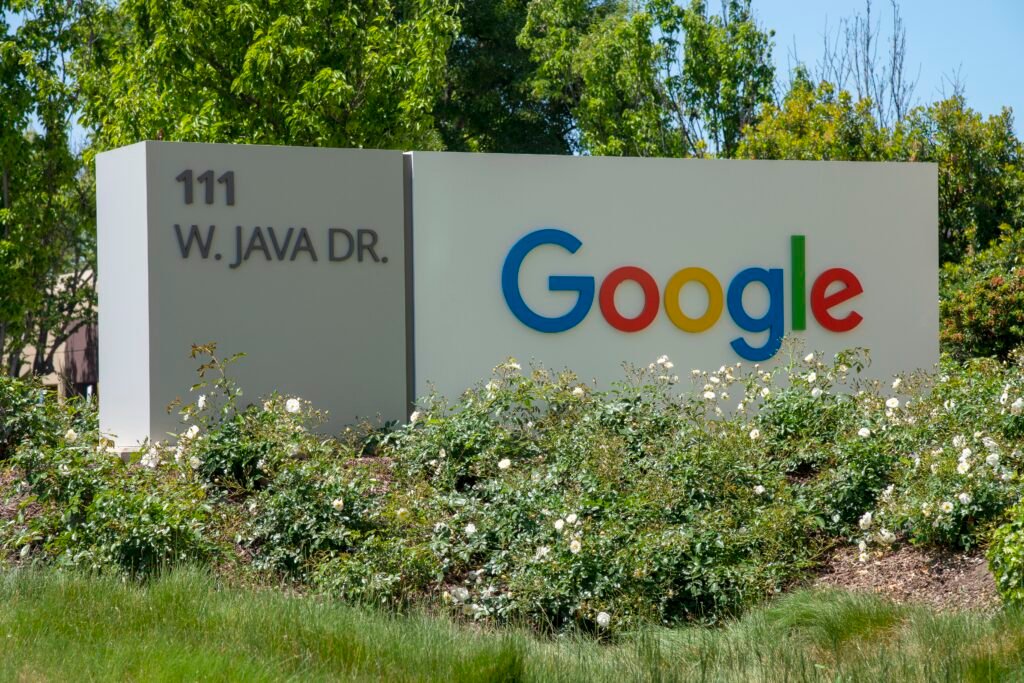Have you ever wondered if Google Translate is powered by artificial intelligence? Well, you’re not alone! In this article, we’ll explore the fascinating world of Google Translate and whether it can be considered a true form of artificial intelligence. Get ready to uncover the inner workings of this popular translation tool and discover if it meets the criteria to be labeled as AI. So, let’s dive right in and unravel the mystery behind Google Translate’s intelligence!
Understanding Artificial Intelligence (AI)
Definition of Artificial Intelligence
Artificial Intelligence (AI) refers to the development of computer systems that can perform tasks that typically require human intelligence, such as speech recognition, problem-solving, learning, and decision-making. AI aims to create machines that can simulate human intelligence and behavior, allowing them to understand, reason, and interact with the world in a way that is similar to humans.
Key Features of AI
AI systems possess several key features that enable them to perform intelligent tasks. These features include the ability to acquire and process large amounts of data, learn from experience, make predictions or recommendations, and adapt their behavior based on new information. Additionally, AI systems can recognize patterns, understand natural language, and even exhibit creativity in certain domains. These capabilities make AI systems versatile and valuable in various industries and applications.
Applications of AI
AI has found applications in numerous domains, ranging from healthcare and finance to entertainment and transportation. One notable application of AI is in language translation, as exemplified by Google Translate. Leveraging AI technologies, Google Translate enables users to translate text between different languages with remarkable accuracy and speed. To achieve this, Google Translate incorporates various AI techniques, including machine learning, natural language processing (NLP), and neural networks.
The Role of Machine Learning in Google Translate
Overview of Machine Learning
Machine Learning (ML) is a subset of AI that focuses on enabling computers to learn from data and improve their performance without being explicitly programmed. ML algorithms analyze large volumes of data to recognize patterns and make predictions or decisions based on their findings. In the context of Google Translate, ML plays a vital role in enhancing translation quality, efficiency, and adaptability.
Machine Learning Techniques in Google Translate
Google Translate utilizes a range of ML techniques to improve translation accuracy and fluency. One of the key techniques employed is supervised learning, where the system is trained on a large dataset of translated texts and their corresponding source texts. By learning from these examples, the system can make accurate translations based on patterns it has identified in the training data. Additionally, Google Translate employs deep learning techniques, such as neural networks, to further refine translations and handle complex language structures.
Benefits of Machine Learning in Translation
The integration of ML in Google Translate offers several benefits. ML algorithms can rapidly process vast amounts of training data, allowing the system to acquire language patterns and improve translation quality over time. Additionally, ML enables Google Translate to adapt to changes in language usage and evolve alongside the development of new languages or phrases. This flexibility ensures that Google Translate remains up-to-date and reliable, delivering consistent and accurate translations to users worldwide.

Natural Language Processing (NLP) in Google Translate
Introduction to Natural Language Processing
Natural Language Processing (NLP) is a field of AI that focuses on the interaction between computers and human language. NLP techniques enable computers to understand, interpret, and generate human language, facilitating tasks such as language translation, sentiment analysis, and text summarization. In the context of Google Translate, NLP plays a critical role in enhancing translation accuracy and fluency.
Integration of NLP in Google Translate
Google Translate leverages NLP techniques to analyze and process input text, enabling it to accurately translate between different languages. Through NLP, Google Translate can understand the grammatical structure, syntax, and semantic meaning of sentences. This understanding allows the system to generate natural and coherent translations that convey the intended message accurately.
NLP Techniques Used for Translations
Google Translate incorporates various NLP techniques to improve translation quality. These techniques include part-of-speech tagging, syntactic parsing, and named entity recognition. Part-of-speech tagging identifies the grammatical category of each word, aiding in understanding sentence structure. Syntactic parsing analyzes the relationships between words and phrases, enhancing the system’s comprehension of the input text. Named entity recognition identifies proper nouns, such as names of people, places, or organizations, ensuring their accurate translation.
Google Translate: Neural Machine Translation
Introduction to Neural Machine Translation (NMT)
Neural Machine Translation (NMT) is an approach to language translation that utilizes artificial neural networks to improve the accuracy and fluency of translations. NMT differs from traditional approaches, such as Statistical Machine Translation (SMT), by using neural networks to model the entire translation process, rather than relying on separate components for different stages. This holistic approach enables NMT to generate more contextually accurate and coherent translations.
NMT Architecture in Google Translate
Google Translate incorporates NMT architecture to enhance translation accuracy and preserve the contextual meaning of the source text. The NMT model consists of an encoder that processes the input text and a decoder that generates the translated output. The encoder converts the source text into a fixed-length representation, capturing its semantic meaning. The decoder then generates the translated output based on this representation, considering the context and preserving the nuances of the original message.
Advantages of NMT in Translations
NMT provides several advantages over traditional translation approaches. Its holistic approach allows it to consider the entire sentence context, resulting in translations that are more fluent and coherent. NMT also handles rare or unseen phrases better than SMT, thanks to its ability to generalize patterns and concepts from the training data. Additionally, NMT can capture more complex language structures, including idiomatic expressions and nuances, offering more accurate and natural translations.

Training Data and Crowdsourcing in Google Translate
Sources of Training Data for Google Translate
Google Translate relies on vast amounts of training data to improve its translation capabilities. This data is collected from various sources, including bilingual texts, official documents, websites, books, and multilingual user-generated content. By incorporating diverse and extensive training data, Google Translate can develop a deep understanding of language patterns, enhancing translation accuracy and versatility.
Use of Crowdsourcing for Translation Improvements
Crowdsourcing has played a significant role in refining the translation quality of Google Translate. Google has engaged millions of users worldwide to contribute their translation suggestions and corrections through the “Improve Translation” feature. This crowdsourced feedback helps train and refine the AI models powering Google Translate, enabling continuous improvements in translation accuracy and idiomatic expression handling.
Benefits and Challenges of Training Data and Crowdsourcing
The utilization of extensive training data and crowdsourcing brings several benefits to Google Translate. It allows the system to capture a wide range of language nuances, adapt to evolving terminologies, and improve translation accuracy iteratively. Moreover, crowdsourcing fosters a sense of community engagement and empowers users to contribute to the development of a more reliable translation service. However, challenges such as maintaining quality control, addressing biases, and managing diverse linguistic variations arise when handling large-scale crowdsourced data.
Evolution of Google Translate
Early Stages and Rule-Based Systems
Google Translate initially relied on rule-based systems that utilized grammatical and syntactical rules to generate translations. While these early systems provided basic translation capabilities, their accuracy and fluency were limited by the strict rules they followed. As languages are complex and varied, rule-based systems struggled to handle contextual nuances and idiosyncrasies present in natural language.
Introduction of Statistical Machine Translation (SMT)
To enhance translation quality, Google Translate transitioned from rule-based systems to Statistical Machine Translation (SMT) approaches. SMT utilized probabilistic models and statistical analysis techniques to generate translations based on large bilingual text corpora. This shift allowed Google Translate to consider the frequency and context of word and phrase usage, improving the overall accuracy and fluency of translations.
Transition to Neural Machine Translation (NMT)
Recognizing the limitations of SMT, Google Translate embraced Neural Machine Translation (NMT), which leverages artificial neural networks to model the translation process holistically. By incorporating NMT techniques, Google Translate has significantly improved translation quality, delivering more accurate and natural translations that capture the contextual nuances of the source text. The shift to NMT marks a significant milestone in the evolution of Google Translate and showcases the continuous advancements in AI and language translation technologies.

Limitations of Google Translate
Contextual and Ambiguity Challenges
Despite significant advancements, Google Translate still faces challenges when dealing with contextual language use and ambiguity. Certain phrases or sentences heavily rely on their context to convey the intended meaning, and translation systems may struggle to capture these subtleties accurately. Ambiguous words or phrases can lead to incorrect translations, especially when the intended meaning is dependent on the broader context.
Idiomatic Expressions and Cultural Nuances
Idiomatic expressions, cultural references, and jokes present unique challenges for machine translation systems. These linguistic aspects often rely on cultural backgrounds, historical references, or shared knowledge, making them difficult to translate accurately without contextual understanding. Google Translate continues to refine its algorithms to handle idiomatic expressions and cultural nuances better, but challenges remain in capturing the full depth and richness of meaning embedded in these language elements.
Complex Sentence Structures
Language translation can be particularly challenging when dealing with complex sentence structures, such as long sentences, nested clauses, or passive voice constructions. Translating such sentences accurately while preserving syntactic and semantic integrity requires robust language comprehension and syntactic parsing capabilities. Although Google Translate has made significant progress in this area, some complex sentence structures may still pose challenges, leading to potential inaccuracies or loss of intended meaning.
Human Involvement in Google Translate
Human Review and Post-Editing
While Google Translate heavily relies on AI technologies, human involvement plays a crucial role in ensuring translation quality and accuracy. Human translators and reviewers play a significant part in validating and refining machine-generated translations. Human review processes, including post-editing, help correct any inaccuracies, idiomatic issues, or cultural nuances that may have been missed by the AI system alone. This collaborative approach between humans and machines helps strike a balance between automation and human expertise.
Collaborative Approaches and Feedback
Google Translate actively encourages users to provide feedback and suggestions to improve translation quality. User feedback is valuable in identifying areas where the system may require adjustments or clarification. Additionally, Google collaborates closely with professional translators, linguists, and language experts to harness their expertise and continuously fine-tune the translation algorithms. This collaborative effort ensures that Google Translate keeps evolving and meeting the ever-changing language needs of its diverse user base.
Balancing Automation and Human Expertise
The integration of AI technologies in Google Translate aims to enhance translation efficiency and broaden language coverage. While automation accelerates the translation process and enables quick access to translations, human expertise remains essential to ensure accuracy, especially in critical contexts, such as legal or medical domains. Striking the right balance between automation and human involvement is critical to providing reliable and high-quality translations that meet user expectations.
Improvements and Future Directions
Ongoing Enhancements to Translation Quality
Google is continuously investing in research and development efforts to improve the quality and accuracy of translations. Ongoing enhancements aim to address the limitations and challenges faced by Google Translate, refining its ability to capture contextual nuances, handle idiomatic expressions, and accurately translate complex sentence structures. Through iterative improvements, Google Translate aims to deliver translations that are indistinguishable from human-generated translations.
Integrating Advanced AI Technologies
As AI technologies continue to advance, Google Translate seeks to integrate these advancements to further enhance translation capabilities. This includes leveraging deep learning techniques, reinforcement learning, and unsupervised learning to refine translation quality, improve language comprehension, and handle complex language features more effectively. By capitalizing on the latest AI developments, Google Translate aspires to remain at the forefront of language translation technology.
Potential of Google Translate in Multilingual Communication
Google Translate has already revolutionized multilingual communication by providing instantaneous translation services to users worldwide. As the system continues to evolve, the potential for bridging language barriers becomes even greater. Google Translate aims to empower users to communicate, collaborate, and exchange ideas seamlessly, irrespective of their native language. By leveraging AI and language technologies, Google Translate contributes to a more connected and inclusive global society.
Conclusion
Google Translate exemplifies the remarkable progress made in the field of Artificial Intelligence, specifically in language translation. Through the integration of advanced AI technologies, such as machine learning, natural language processing, and neural networks, Google Translate has transformed the way we communicate and connect across languages. While there are limitations to machine translation, Google Translate continues to evolve, driven by ongoing enhancements, human expertise, and collaborative approaches. With its potential to break down language barriers and foster cross-cultural understanding, Google Translate serves as a testament to the power and potential of AI in shaping our global communication landscape.





